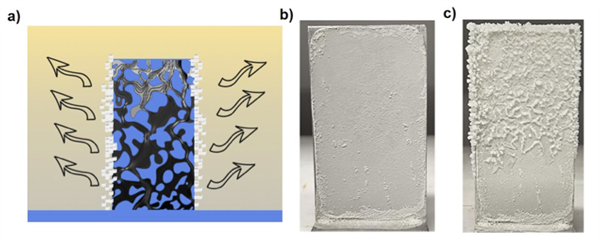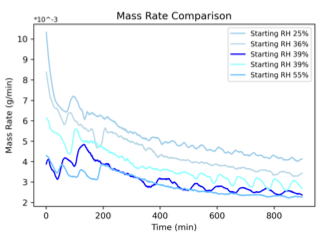Fabrication And Capillary Flow In Microporous Wick For Non-Thermal Solar Desilanation
Full Description
Background
Thermal desalination processes involve the conversion of absorbed heat to evaporate and separate water. Heat leakage causes inefficiencies in these processes - via conduction, convection and radiation. Additionally, water to steam conversion is an energy intensive process. Mangroves that grow in intertidal zones filter the salt water they absorb using negative pressure that is generated by evaporative capillary forces in their leaves.
Invention
Taking inspiration from Mangroves, a research team led by Prof. Luat Vuong has developed a novel wick that uses a phenomenon associated with salt creep in which light-induced potentials combine with capillary-based desalination that bypasses the need for thermal evaporation. The wick is made of microparticles sintered together that act as the porous material in which capillary action is induced by shining a light on the wick.
Images

(a) Illustration the process of water evaporation and salt crystallization on the wick. (b) and (c) show the as developed wick pre- and post-trial with 300,000 parts per million (ppm) salinity water.

Evaporation of water at various relative humidity levels with a 150 mW optical illumination over 1 sq. cm. surface of the wick in 300,000 ppm salinity water.
Advantages
- Compared to most desalination technologies that involve expensive materials, the current technology offers a durable and cost-effective solution.
- Achieves high evaporation rates between 1.5 and 3.2 kg/m2/hour with 1 sun, depending on the relative humidity for high salinity brines.
- Eco-friendly process - avoids thermal methods of evaporation.
- Material can withstand high temperatures.
- Salt creep crystallization via capillary rise is an effective approach for brine and water purification to achieve zero liquid discharge.
Suggested uses
- Desalination
- Radiative cooling
- Water purification of high-salinity brines
Inventor Information
- Please review all inventions by Prof. Vuong and her team at UCR.
- Please visit Prof. Vuong's group website, to learn more about their research.
Related Materials
Patent Status
| Country | Type | Number | Dated | Case |
| United States Of America | Published Application | 20240076213 | 03/07/2024 | 2023-963 |
Contact
- Venkata S. Krishnamurty
- venkata.krishnamurty@ucr.edu
- tel: View Phone Number.
Other Information
Keywords
desalination, brine, water purification, salt creep, capillary force, radiative cooling, mangroves
